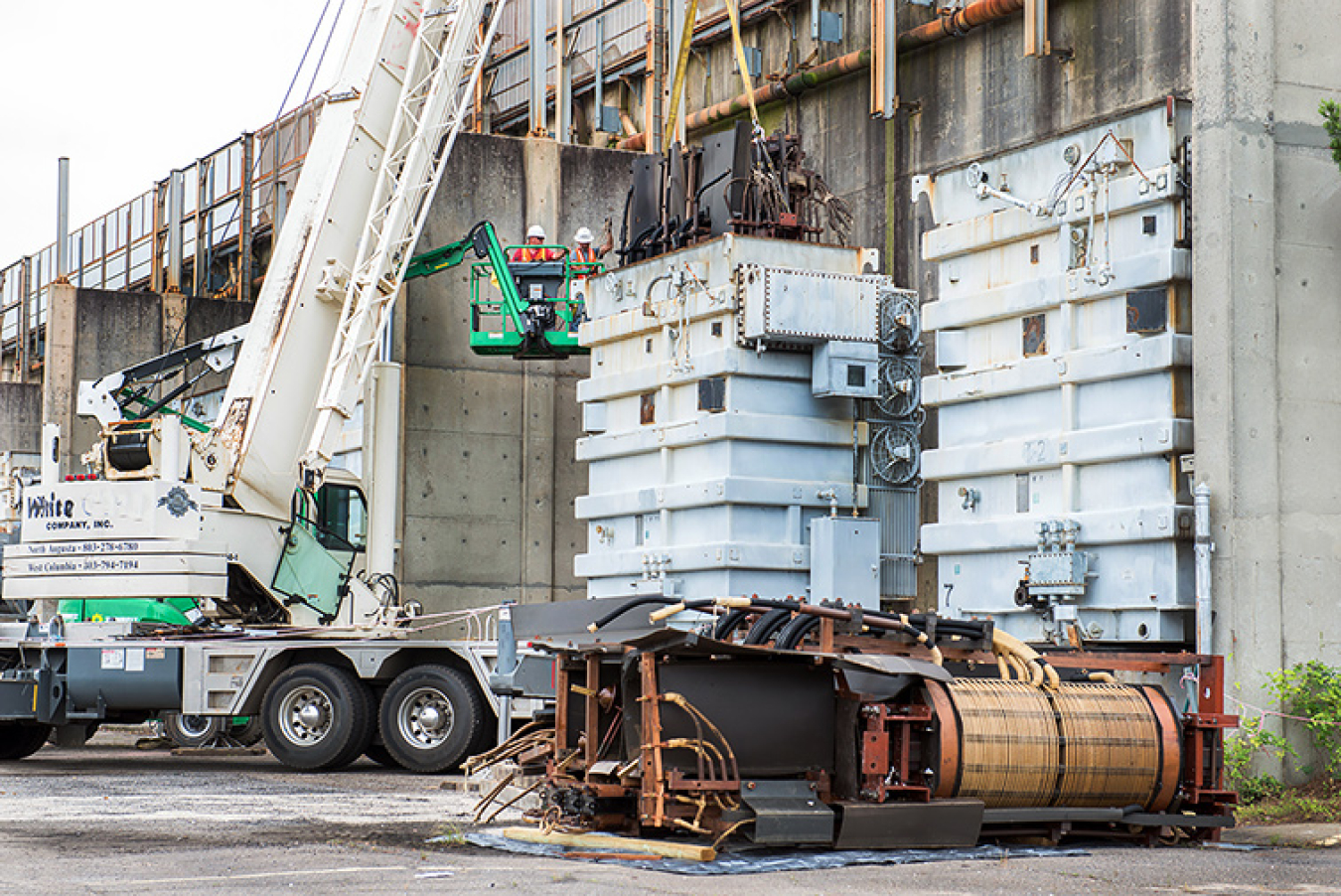
The Office of Electricity has partnered with national labs, led research, issued funding announcements, and held workshops and to address transformer innovation and supply. Below are examples of these efforts:
NREL Study: Long-term Drivers of Demand for Distribution Transformers
OE and the National Renewable Energy Laboratory (NREL) are assessing the long-term drivers of demand for distribution transformers. Initial data suggests that demand increases are due not only to electrification and renewable energy growth, but also to aging electric infrastructure, increased frequency and severity of extreme weather events, and utility-driven investments to improve distribution system reliability and resiliency.
The insights from this “Major Drivers of Long-Term Distribution Transformer Demand” study come from an initial NREL analysis, plus extensive interviews with major U.S. transformer manufacturers and utility representatives. NREL’s preliminary analysis estimates that the U.S.’s current stock is between 60-80 million distribution transformers with upwards of 3 TW of installed capacity. The analysis estimates the growth in overall stock capacity by 2050 will see up to a 160%–260% increase on 2021 levels.

DOE Programs Offer Financial Assistance
To address these challenges, DOE has offered recent funding opportunities announcements (FOAs) and R&D efforts. This includes the $18 million (Flexible Innovative Transformer Technologies (FITT) FOA to advance the research, development, and demonstration (RD&D) of advanced transformers (e.g., flexible, modular, scalable, hybrid, and solid-state transformers) across a range of distribution to transmission scale applications; Applications are due by April 14.
In addition, OE released a Small Business Innovative Research (SBIR) FY 2024 Phase I Release II topic on January 18 to advance technology innovations that can extend distribution transformer lifetime and increase equipment reliability.
DOE’s Manufacturing and Energy Supply Chain (MESC) office provided funding through the Energy Efficient Transformer Rebates program to encourage the replacement of qualified energy inefficient transformers. In addition, President Biden invoked the Defense Production Act to accelerate domestic manufacturing of transformers and critical grid components. Furthermore, MESC is developing solutions to address labor shortages, such as the availability of workers with the desired skills sets, training and retaining good talent.

Transmission Program Addresses Unique Transformer Challenges
Within OE, the Transformer Resilience and Advanced Components (TRAC) program supports modernization and grid resiliency by addressing the unique challenges of transformers and other critical components (i.e., grid hardware). Below are examples of TRAC-funded research and development (R&D) efforts to modernize LPTs and distribution transformers:
Past R&D Efforts
- OE and General Electric designed, built, and deployed the world’s first flexible Large Power Transformer (LPT). The prototype is a 165kV, 60/80/100MVA autotransformer with three LV ratings, including 57.5kV, 69kV and 80.5kV and a leakage impedance adjustable online from 4.3% to 9.3%.
- OE and the University of Texas at Austin developed and demonstrated a 500kVA 20kV/4kV single phase modular Hybrid Solid State Transformer for next generation flexible and adaptable LPTs.
- OE and NextWatt led the effort to provide an innovative design for a high-frequency-link LPT that is more flexible, lighter, and resilient than current 60-Hz LPT designs. The team designed, fabricated, and tested a 100-kVA module for a three-phase 20 kHz HFL-LPT; and demonstrated a cascaded multi-HFL-LPT for three-phase high-power operation.
- OE and the National Energy Technology Laboratory (NETL) partnered on a R&D 100 award recipient project. The project developed optical fiber sensors for selective detection of acetylene dissolved in transformer oil, therefore enhancing currently available transformer health monitoring capabilities.
- OE and the Idaho National Laboratory (INL) partnered on efforts to develop robust insulation for transformers and power electronics. The team developed and compared various materials electrical performance at varying temperatures, electrical frequencies, and voltages, as well as their mechanical properties. Improved transformer insulation is key to longer equipment lifetime.
Current R&D efforts
- OE and Georgia Tech designed, built, and are currently testing a 5 MVA 24 kV/12 kV modular controllable transformer (MCT) to demonstrate its functionality, which includes modularity, interoperability through variable impedance and connection of multiple voltage levels, power flow control, and fail-normal design.
- OE and the National Energy Technology Laboratory (NETL) are partnering on efforts to enable soft magnetics for power conversion applications as more efficient and flexible magnetic components are needed to keep pace with higher voltage/switching frequency devices for grid modernization, electrification, and shifts toward distributed generation resources.
- OE and INL are partnering on efforts to enhance LPT seismic resilience via the development of transformer bushing isolators that can be key in protecting LPTs in seismic events.
Manufacturing Workshop for Innovation of Transformers
In May 2023 the Office of Electricity (OE) hosted Advanced Transformers Workshop to identify the technology gaps and opportunities associated with transformers and other potential substitute and supporting technologies. The workshop addressed transformer specifications, procurement practices, and tech-to-market requirements; advanced transformer design and materials; transformer manufacturing perspective/industry best practices; solid-state transformers; and transformer advanced features (e.g., flexibility, modularity, scalability). Workshop presenters also identified the benefits and limitations of power transformers and distribution transformers, respectively, and discussed the challenges and paths to achieve advanced transformers.
The workshop included the attendees from utilities, manufacturers, federal agencies, national laboratories, academia, and research institutions.
All these efforts combined—the lab studies, funding opportunities, R&D advances, and workshop—are advancing transformers as critical components to a reliable grid. OE looks forward to continuing its partnerships to innovate and advance transformers across the industry.

